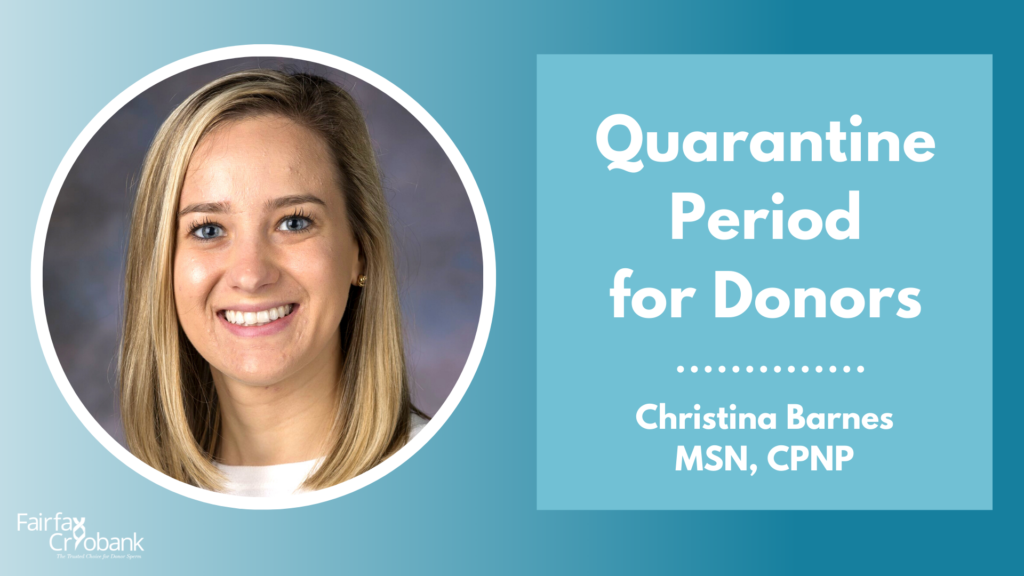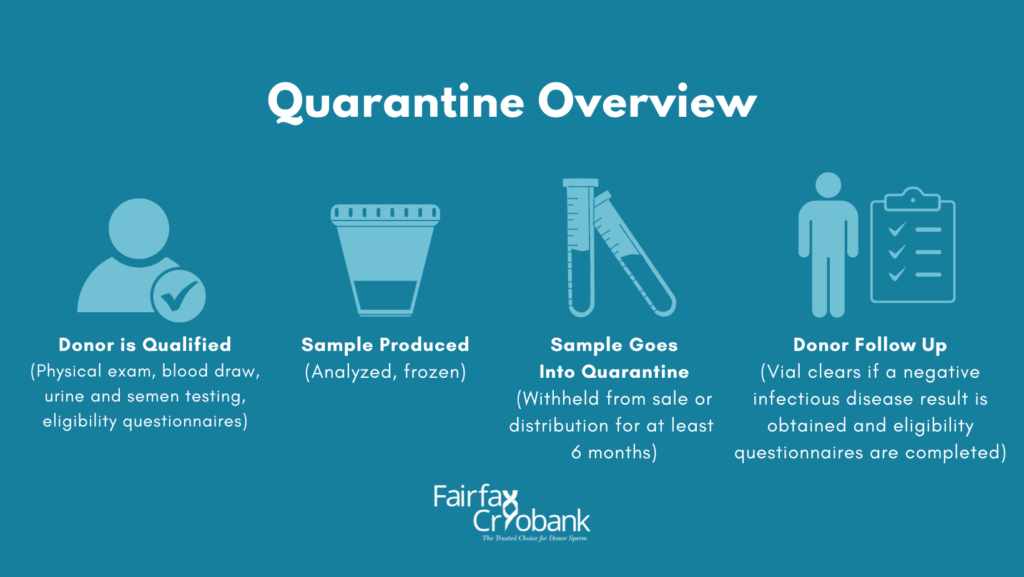Quarantine Period for Donors
Guest Blogger, Christina Barnes, MSN, CPNP, explains the necessity of the quarantine period for donor sperm vials.

You’ve finally found the donor you want to use, but his remaining vials aren’t available now. The vials are in quarantine, and your cryobank can’t say precisely when they’ll be available. Why are the vials in quarantine? You’ve waited this long to have a baby – now you have to wait again? What’s going on here?
With donor sperm, the timeline for releasing vials for sale isn’t always clear-cut. Cryobanks follow strict FDA guidelines, one of which is a mandatory quarantine for all samples. Here are some things to know about the quarantine period, plus recommendations for how to make sure you have sperm when you need it.
Vials have to be in quarantine for at least six months.
When it’s time for the donor to give a sperm sample, he goes into the cryobank to produce the sample. That sample is placed into vials, and those vials have to remain in the cryobank for at least six months before they can be released for sale.
There’s an excellent reason for this. “The donor has to have a panel of FDA-mandated blood tests for STDs at least six months after donating. Those tests have to be negative before the vials can be released,” says Suzanne Seitz, a genetic counselor at Fairfax Cryobank.
The donor must undergo STD bloodwork testing at least six months after the sample is produced.
Why does the donor have to wait six months after giving a sample for the STD tests? Why can’t he just test at the time of donation?
The answer may surprise you – a person can be exposed to an STD but not test positive for months after becoming infected. For example, a person infected with HIV may not test positive for HIV until three months after the initial exposure. So your donor could theoretically become infected with HIV, donate sperm a month later, but still test negative for HIV when he gives his sample. Six months after donation, though, an infected person would test positive.
The donor’s STD test results have to be negative.
If your donor’s STD test is negative, any samples given six or more months before that test are safe. The cryobank can only release vials for sale once the negative test results are confirmed. If the donor has vials produced less than six months before the negative test, those vials will have to stay in quarantine until he has another negative STD test in the future.

Donor vials are released on an ongoing basis.
The cryobank schedules donors on a regular basis for sperm donation and bloodwork. A donor doesn’t give all of his sperm samples in one day – he may donate multiple times over six months. In order to release those vials from quarantine as quickly as possible, he will have multiple STD blood tests over many months.
There are variables to this, and it’s important to remember that the donor is a real person with a real life. Bloodwork may be delayed if the donor is out of the country or sick and can’t come into the cryobank. Sometimes the cryobank truly doesn’t know when vials will be released, because a lot of the release depends on the donor’s blood test.
The quarantine period means safer sperm for you and your baby.
Waiting six months allows the cryobank to re-check for STDs that may not have shown up on previous bloodwork. These safety standards are higher than what you usually get with known donors or partners.
Those who choose to go with a known donor usually don’t store the sperm sample and re-test the donor six months later. If your known donor tests negative and then you use the sperm sample right away, you still may be at risk of contracting an STD. What if your known donor contracted HIV one month before donating, but tested negative when you used the sperm? You would be exposed to HIV, and you probably wouldn’t find out until he tested positive.
If you find the donor you want, buy vials quickly.
When new donors first become available, they may only have a few vials for sale. Most of their vials may still be in quarantine. You should buy as many vials as you need for all cycles and future pregnancies – you can return any unused vials for 50% of the original price as long as they haven’t left the facility.
Once a donor’s available vials sell out, you can be placed on a waitlist for future releases of vials in quarantine. If your preferred donor has completely sold out with no vials in quarantine, you can be placed on a waitlist for any returned vials that were sold and kept at the cryobank.
Have your vial first, then plan your cycle.
You don’t want to be mid-cycle and realize you can’t get your preferred donor’s sample in time. If a donor doesn’t have any vials available, you shouldn’t be planning a cycle around that donor. Genetic counselor Suzanne suggests picking a second-choice donor if you want someone immediately. “You can switch out your second choice donor with your first choice donor for a small fee, if they become available,” she says. “If you store your vials at the cryobank, it’s easy to make that switch.”
For more information about quarantine and donor status, read here.







